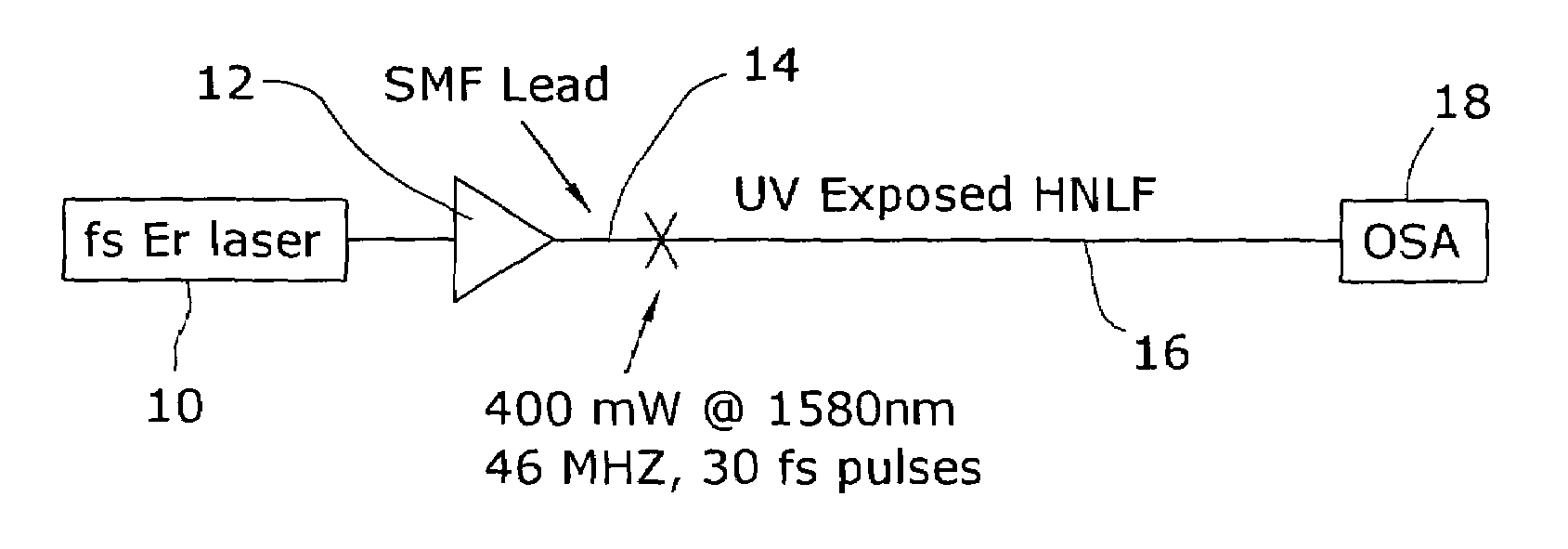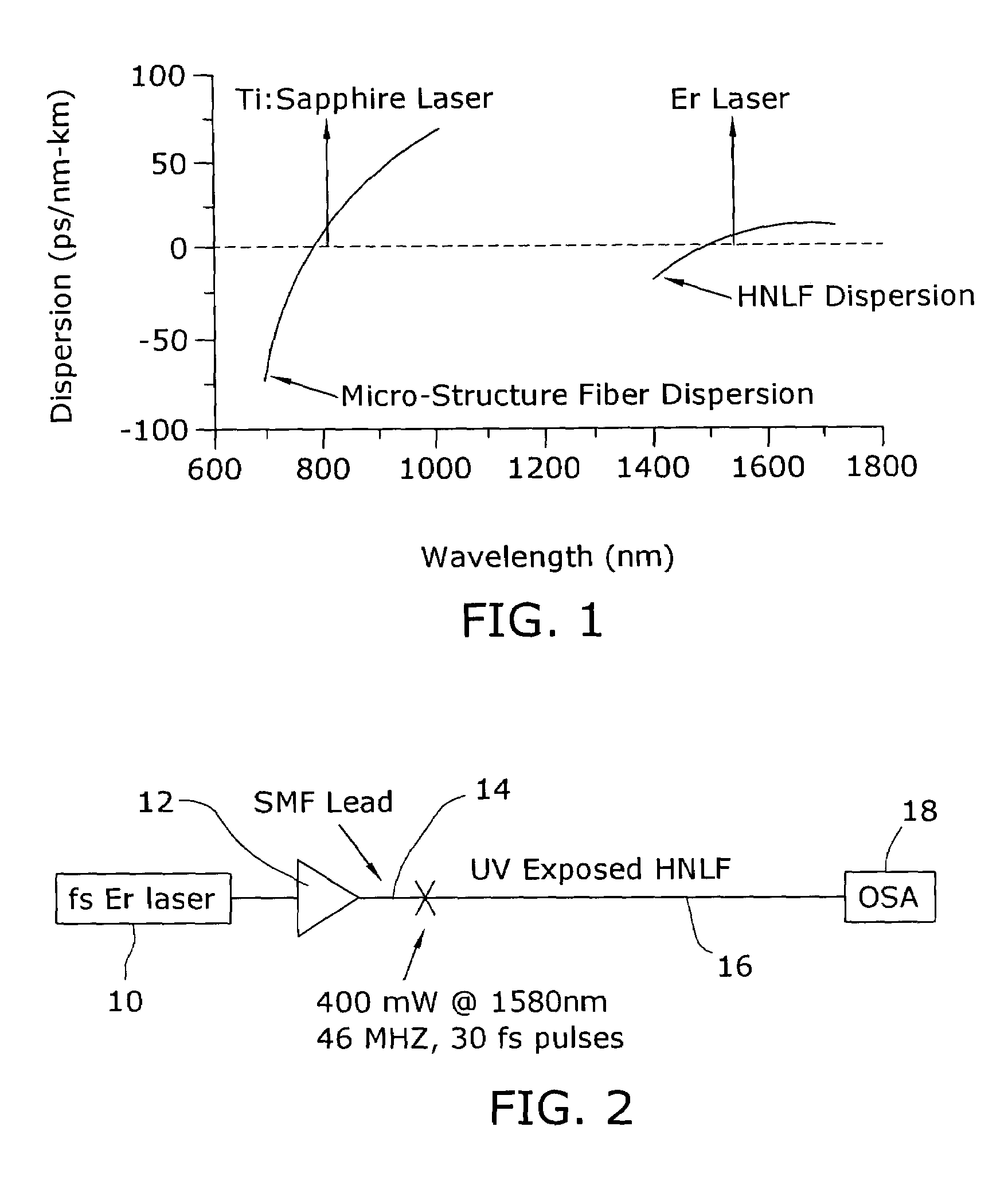Enhanced supercontinuum generation in highly nonlinear fibers using post-fabrication processing
a highly nonlinear fiber and post-fabrication processing technology, applied in the field of supercontinuum generation, can solve problems such as the inability to reliably and inexpensively reproduce and manufacture such a fused fiber source, the degradation of coherence in the generating process, and the inability to generate problematic reflections, so as to enhance the supercontinuum generation ability and prevent the generation of problematic reflections. , the effect of modifying the dispersion and effective area of the hnl
- Summary
- Abstract
- Description
- Claims
- Application Information
AI Technical Summary
Benefits of technology
Problems solved by technology
Method used
Image
Examples
Embodiment Construction
[0017]Supercontinuum generation in fibers is well known and has been demonstrated in numerous fiber waveguides. Nonlinear interactions in such fibers are greatly affected by fiber properties such as effective area (Aeff) and waveguide dispersion. Waveguide dispersion governs how quickly a launched pulse will spread in the time domain and, as a result, how quickly the peak power of the pulse will decrease as it propagates along the fiber. In addition, the peak intensity of the pulse will be larger for fibers with a smaller Aeff, and will determine the magnitude of the nonlinear interactions in the waveguide itself. However, as mentioned above, current supercontinua have limitations that are dictated by the dispersion and nonlinearity of the fiber. Various applications currently exist (for example, frequency metrology) that would greatly benefit by broadening the continuum. In particular, broadening the supercontinuum would allow for a smaller length of HNLF to span an octave for a gi...
PUM
| Property | Measurement | Unit |
|---|---|---|
| effective area | aaaaa | aaaaa |
| wavelengths | aaaaa | aaaaa |
| average power | aaaaa | aaaaa |
Abstract
Description
Claims
Application Information
 Login to View More
Login to View More - R&D
- Intellectual Property
- Life Sciences
- Materials
- Tech Scout
- Unparalleled Data Quality
- Higher Quality Content
- 60% Fewer Hallucinations
Browse by: Latest US Patents, China's latest patents, Technical Efficacy Thesaurus, Application Domain, Technology Topic, Popular Technical Reports.
© 2025 PatSnap. All rights reserved.Legal|Privacy policy|Modern Slavery Act Transparency Statement|Sitemap|About US| Contact US: help@patsnap.com



